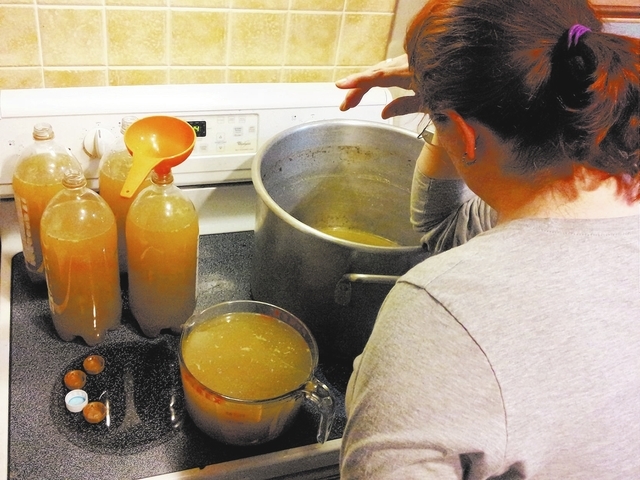DIVAS ON A DIME: Now let’s talk turkey stock
Don’t throw that turkey frame away! (I say frame because I don’t think the word “carcass” is remotely appetizing). There are those who see treasure where others see trash and I see potential meals where others see, well, trash.
Why make stock?
Because homemade stock is simply better than store bought. It tastes better, it’s easy to make and costs next to nothing. And it’s healthy.
Homemade stock doesn’t contain any MSG or additives and you control the sodium. You’ll notice that after making stock, the bones will become extremely brittle. That’s because the long simmer has extracted most of the collagen from the bones as well as nutrients like calcium, magnesium, phosphorous, potassium, fluoride and other trace minerals.
The cartilage, ligaments and tendons are all made of a protein called collagen, which also dissolves into the water making gelatin. The gelatin gives the broth protein and that beautiful velvety mouth feel. Plus, its chock full of glucosamine and chondroitin, both beneficial to joint health. A touch of vinegar helps extract all those nutrients.
What You’ll Need:
1 turkey frame, cut into large pieces
1 onion, quartered with skin
2 or 3 carrots, scrubbed, roughly chopped
2 or 3 stalks celery with leaves, roughly chopped
1/2 tsp. whole black peppercorns
2-4 whole cloves garlic, smashed - optional
Pinch red pepper flakes – optional
Herbs – what you like; parsley, thyme, rosemary — optional
10 to 14 cups cold water
1 tsp. cider vinegar
Here’s How:
Place frame, onion, carrot, celery, peppercorns, garlic and pepper flakes in a large stockpot. Add water to cover by 1 inch, add vinegar. Bring to a boil then immediately reduce heat.
Partially cover the pot with the lid and gently simmer the stock as low as possible, skimming foam as needed, for 4 hours or longer.
Strain, and discard solids. Allow the stock to cool. Use a skimmer to remove the fat on the surface of the stock. For safety’s sake cool the stock quickly and refrigerate as soon as possible. The stock can be refrigerated for up to 3 days or frozen up to 3 months.
Diva Tips: If you can’t maintain a steady, even heat on the stove top, you can cook the stock in a 180-200°F oven. Don’t add salt until the very end because the stock will reduce and that intensifies the saltiness.
You may find homemade stock has so much flavor it doesn’t need salt at all. Quickly cool stock by placing the stock pot in a sink filled with ice water.
Freeze some in an ice cube tray for adding small amounts to recipes.
Cloudy vs. Clear: What makes stock cloudy? It’s an emulsification of the fats and protein in the water caused by boiling and stirring. It boils down to this: don’t boil the stock.
The key to a clear stock is to bring the water to a boil at the beginning and then cook at just barely a simmer for the rest of the cooking time.
Purists will disagree with me but personally I don’t care if my stock is cloudy. And since I often use mine in soups that contain cream it doesn’t matter at all. Take that, purists!
Frugal Fodder contributed by Patti Diamond author of Divas On A Dime — Where Frugal, Meets Fabulous! www.divasonadime.com Join us on Facebook at DivasOnADimeDotCom.

















